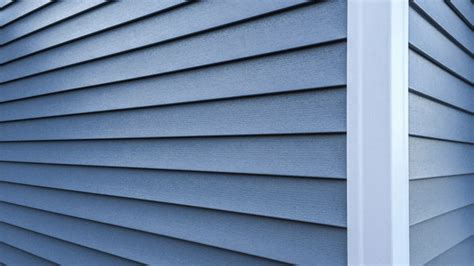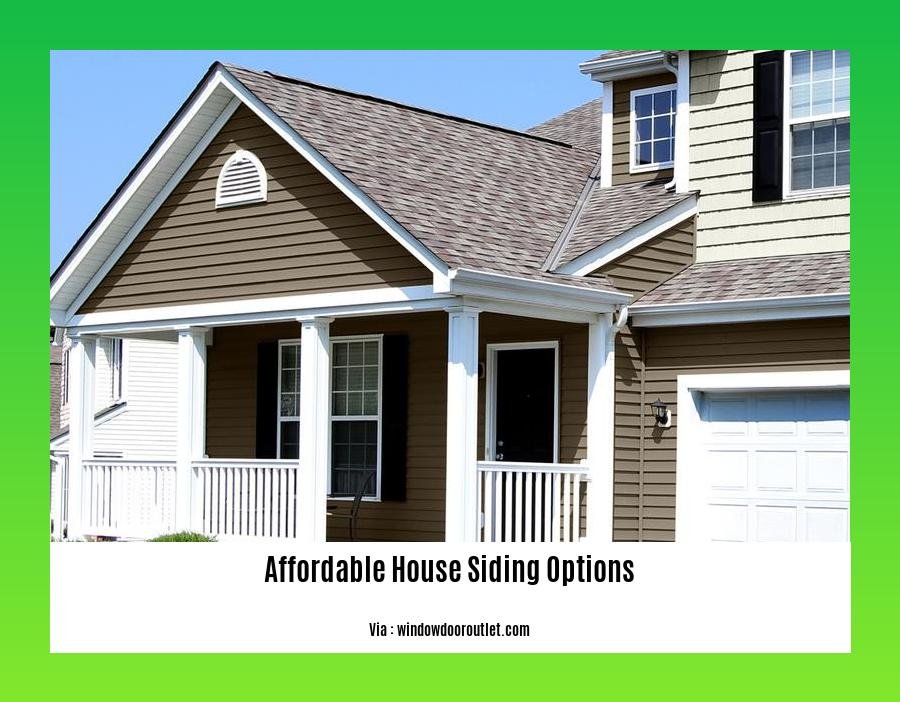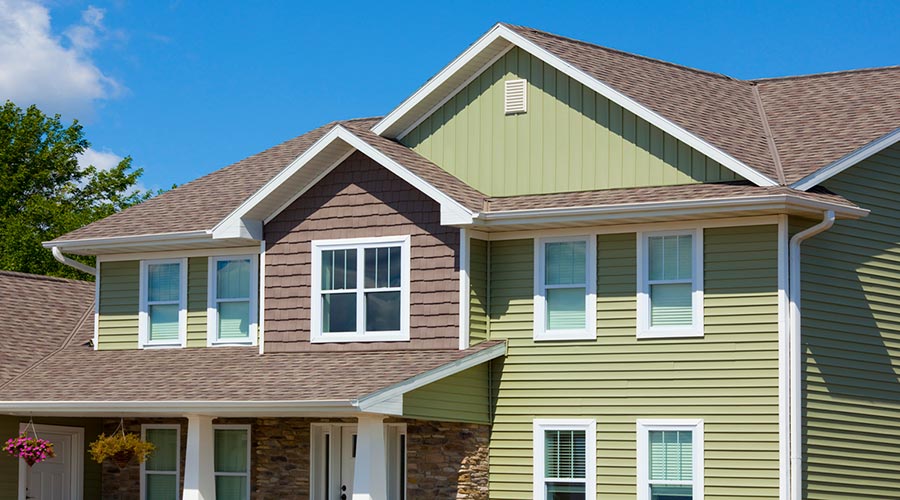Delve into the world of affordable home siding options, where a plethora of choices await homeowners looking to revamp their exteriors. This guide promises to unravel the complexities of siding materials, costs, energy efficiency, design options, and installation methods, providing valuable insights for your next home improvement project.


.jpg" alt="Siding cedar costs budget engineered cheaper significantly" width="790" height="515" />
When it comes to affordable home siding options, aesthetics and design play a crucial role in enhancing the overall look of your home. Choosing the right siding material, color, texture, and style can significantly impact the curb appeal and value of your property.

Types of Affordable Home Siding Options
When it comes to choosing affordable home siding options, it's important to consider not only the initial cost but also the long-term durability and maintenance requirements of each material. Here are five different types of affordable home siding options along with their pros and cons:Vinyl Siding
Vinyl siding is a popular choice for homeowners due to its affordability and low maintenance requirements. It is available in a wide range of colors and styles, making it a versatile option for many homes. However, vinyl siding may not be as durable as other materials and can crack or fade over time.Fiber Cement Siding
Fiber cement siding is another cost-effective option that offers the look of wood without the high maintenance. It is resistant to fire, insects, and rot, making it a durable choice for homeowners. However, fiber cement siding can be heavier and more challenging to install compared to other materials.Engineered Wood Siding
Engineered wood siding is a more affordable alternative to natural wood siding, offering a similar aesthetic appeal at a lower cost. It is easy to install and requires minimal maintenance. However, engineered wood siding may not be as durable as natural wood and can be prone to moisture damage if not properly maintained.Aluminum Siding
Aluminum siding is a lightweight and cost-effective option for homeowners looking for a durable material. It is resistant to rust and rot, making it a low-maintenance choice. However, aluminum siding can dent easily and may not offer as much insulation as other materials.Steel Siding
Steel siding is a strong and durable option that can withstand harsh weather conditions and resist pests. It is low maintenance and offers excellent protection for homes. However, steel siding can be more expensive than other materials and may require professional installation.Cost-Effective Siding Materials
When it comes to choosing siding materials for your home, cost is a significant factor to consider. Here, we'll delve into the cost estimates for popular affordable siding materials, factors that influence the cost of siding installation, and tips on how to minimize costs.Popular Affordable Siding Materials
- Vinyl Siding: Vinyl siding is one of the most affordable options, ranging from $3 to $8 per square foot for materials. Installation costs can vary but are generally lower compared to other materials.
- Fiber Cement Siding: Fiber cement siding is another cost-effective option, priced around $5 to $10 per square foot for materials. While installation costs may be higher due to the weight of the material, its durability can lead to long-term savings.
- Metal Siding: Metal siding is a budget-friendly choice, with costs ranging from $5 to $15 per square foot for materials. Installation costs can be moderate, depending on the type of metal used.
Factors Influencing Cost of Siding Installation
- Size of the Home: The larger the home, the more materials and labor will be required, leading to higher costs.
- Quality of Materials: Higher quality materials often come with a higher price tag but can result in lower maintenance and replacement costs in the long run.
- Complexity of Design: Intricate designs or architectural features may increase installation costs due to the additional time and skill required.
Tips to Minimize Costs
- Compare Quotes: Get quotes from multiple contractors to ensure you're getting a competitive price for both materials and installation.
- DIY Where Possible: If you're handy and have the skills, consider tackling some aspects of the installation yourself to save on labor costs.
- Maintain Regularly: By keeping up with maintenance tasks like cleaning and inspections, you can prolong the lifespan of your siding and avoid costly repairs or replacements.
Energy Efficiency and Insulation
When it comes to selecting affordable home siding options, considering energy efficiency and insulation is crucial for maintaining a comfortable indoor environment and reducing energy bills.Impact of Siding Materials on Energy Efficiency
The choice of siding material can significantly impact a home's energy efficiency. Materials like vinyl and insulated vinyl siding offer better insulation properties compared to traditional options like wood or aluminum. This can help regulate indoor temperatures, reducing the strain on heating and cooling systems.Insulation Properties of Affordable Siding Options
- Vinyl Siding: Vinyl siding is known for its insulation properties, helping to keep the home cool in summer and warm in winter.
- Fiber Cement Siding: Fiber cement siding provides excellent insulation, reducing heat transfer and improving energy efficiency.
- Insulated Vinyl Siding: This type of siding comes with additional insulation layers, enhancing thermal performance and reducing energy consumption.
Recommendations for Selecting Energy-Efficient Siding Materials
- Consider the R-value: Look for siding materials with a high R-value, indicating better insulation properties.
- Choose Insulated Options: Opt for insulated siding materials like insulated vinyl or fiber cement to improve energy efficiency.
- Consult a Professional: Seek advice from a siding expert to determine the best energy-efficient option based on your home's specific needs and climate.
Aesthetics and Design Options
Aesthetic Appeal of Various Affordable Siding Materials
- Vinyl Siding: Vinyl siding comes in a wide range of colors and styles, mimicking the look of wood, stone, or other materials. It is a versatile and cost-effective option for homeowners looking to achieve different aesthetic effects.
- Fiber Cement Siding: Fiber cement siding offers the look of wood without the maintenance and is available in various textures and finishes. It provides a durable and attractive option for those seeking a traditional look.
- Metal Siding: Metal siding can be a modern and sleek choice for contemporary homes. It comes in different colors and finishes, such as smooth, textured, or embossed, allowing for customization to suit your style.
Color Options, Textures, and Styles
- Color: When selecting a color for your siding, consider the architectural style of your home, the surrounding environment, and your personal preferences. Neutral tones like beige, gray, and white offer timeless appeal, while bolder colors can make a statement.
- Textures: Textured siding can add depth and visual interest to your home's exterior. Options like wood grain, stone texture, or smooth finishes can create a unique and inviting look.
- Styles: Whether you prefer a traditional, rustic, modern, or eclectic style, there are siding options available to complement your home's design aesthetic. From lap siding to shingles to vertical panels, choose a style that enhances the overall appearance of your property.
Choosing a Siding Design
- Consider the architectural style of your home: Match the siding design to the architectural style of your home for a cohesive look. For example, horizontal lap siding may suit a colonial-style home, while vertical panels could complement a modern architecture.
- Balance and proportion: Ensure the siding design maintains a balance and proportion with other exterior elements like windows, doors, and rooflines. Avoid overwhelming or underwhelming the overall look of your home.
- Consult a professional: If you're unsure about which siding design to choose, seek advice from a professional contractor or designer. They can provide recommendations based on your home's style, budget, and personal preferences.
DIY vs. Professional Installation
 When it comes to installing siding on your home, you have the option to either tackle the project yourself or hire professionals. Each approach has its own set of benefits and drawbacks, so it's essential to weigh your options carefully before making a decision.For those considering DIY siding installation, the potential cost savings on labor can be a significant advantage.
You have the flexibility to work at your own pace and schedule, and you may take pride in completing a project on your own. However, DIY installation requires a certain level of skill, time, and effort, and mistakes can be costly to fix.On the other hand, hiring professionals for siding installation can ensure a quicker and more efficient process.
Professionals have the necessary expertise and equipment to complete the job accurately and in a timely manner. While this option may be more expensive upfront, it can save you from potential headaches and ensure a high-quality result.
When it comes to installing siding on your home, you have the option to either tackle the project yourself or hire professionals. Each approach has its own set of benefits and drawbacks, so it's essential to weigh your options carefully before making a decision.For those considering DIY siding installation, the potential cost savings on labor can be a significant advantage.
You have the flexibility to work at your own pace and schedule, and you may take pride in completing a project on your own. However, DIY installation requires a certain level of skill, time, and effort, and mistakes can be costly to fix.On the other hand, hiring professionals for siding installation can ensure a quicker and more efficient process.
Professionals have the necessary expertise and equipment to complete the job accurately and in a timely manner. While this option may be more expensive upfront, it can save you from potential headaches and ensure a high-quality result.
Step-by-Step DIY Siding Installation Guide
- Begin by preparing the exterior surface of your home, ensuring it is clean and free of any debris or damage.
- Measure and cut the siding materials to fit the dimensions of your home, following the manufacturer's instructions.
- Install the starter strip at the bottom of the wall, ensuring it is level and securely attached.
- Place the first piece of siding at the starting point, making sure it is level and properly aligned.
- Continue installing the siding, overlapping each piece according to the manufacturer's guidelines.
- Finish the installation by securing the final piece of siding and adding any necessary finishing touches.
Remember to wear appropriate safety gear, such as gloves and goggles, and use caution when working at heights or with power tools.
Common Pitfalls to Avoid in DIY Siding Installation
- Avoid improper measurements or inaccurate cuts, as this can lead to gaps or inconsistencies in the siding.
- Ensure proper alignment and leveling of each piece of siding to maintain a uniform appearance across the wall.
- Be mindful of the weather conditions during installation, as extreme temperatures or precipitation can affect the siding material.
- Take your time and follow the manufacturer's instructions carefully to prevent costly mistakes or damage to the siding.
Final Summary
 In conclusion, the realm of affordable home siding options offers a myriad of possibilities to enhance your home's aesthetics, energy efficiency, and durability. Armed with the knowledge from this guide, you can make informed decisions to transform your house into a cozy abode that exudes charm and style.
In conclusion, the realm of affordable home siding options offers a myriad of possibilities to enhance your home's aesthetics, energy efficiency, and durability. Armed with the knowledge from this guide, you can make informed decisions to transform your house into a cozy abode that exudes charm and style.












